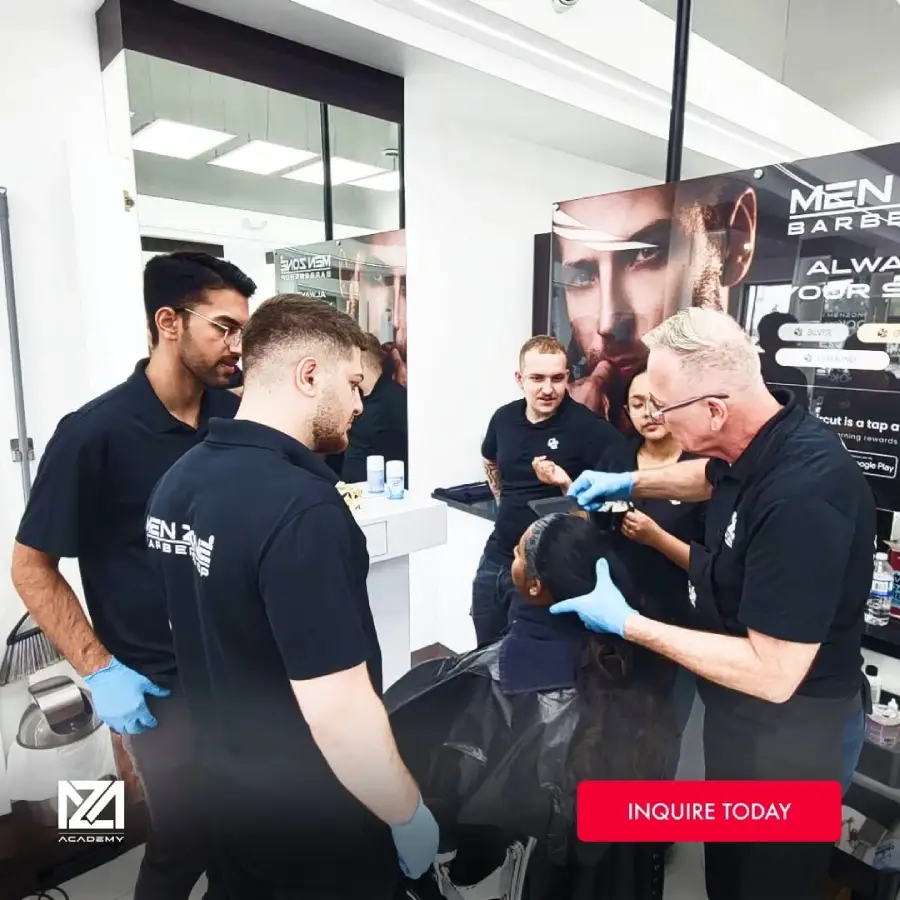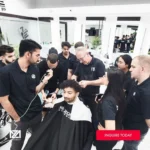Technology has revolutionized professional education. Remote learning experiences have now replaced traditional learning methods. Passionate learners can pursue professional courses conveniently and learn at their own pace.
While gaining practical experience wasn’t possible until recently, the evolution of newer technologies has allowed people to gain hands-on experience remotely. This blog explores how technology impacts learning in the hairstyling industry, learning about innovations, and what learners can expect in the future.
Evolution in Hairstyling Education
Before technology took over the world, almost all forms of education were provided in person. Students visited a school to learn directly from an instructor and practiced on mannequins or live models. These traditional learning methods hold importance even now, but with technology, learners can explore new ways of learning that offer flexibility, accessibility, and customization. The hairstyling industry has progressively embraced technology to help learners strive for their passion, even if being physically present in a classroom may not be possible.
How is Technology Shaping Modern Hairstyling Courses
Changes in professional hairstyling courses did not happen all of a sudden. It was a gradual implementation. Let’s look at the process:
1. Online Learning Platforms
One of the biggest changes in hair styling education is the shift to online learning. Learners may find hairstyling tutorials and courses available for free through platforms like YouTube. With a stable internet connection and access to such platforms, students can learn by watching videos and attending webinars.
With virtual barbering and hairstyling courses, students can learn at their convenience, revisit concepts and review techniques for innumerable times. Online courses are an accessible window into hair styling education for those with time limitations or who cannot travel and physically attend a class.
2. Virtual Reality (VR) Training
With the entry of virtual reality in hairstyling education, learning has become more immersive. Students enter a virtual salon to practice techniques just as they would on real clients. They gradually master their skills, from basic haircuts to new colouring techniques. The experience seems realistic even without the presence of human models. VR offers a risk-free space where the learner can work on their mistakes without the pressure faced during a real-life scenario.
The use of this technology has just begun. Professional hairstyling education is important as can build confidence and proficiency so that stylists can understand what to expect when encountering various situations in their working lives.
3. 3D Technology and Augmented Reality (AR)
Augmented reality is transforming the consultation and training process. AR apps on smartphones or tablets allow clients to “try on” different hairstyles, colours, and cuts, giving the stylist and client a sense of what to expect. AR can also be used for training purposes, where the learner can try different techniques on 3D models, allowing them to make observations from several angles and see each step very clearly.
AR in hairstyling courses fills the gap between theoretical knowledge and practical application. For instance, by utilizing AR on a virtual model, a learner can view the highlights and lowlights to better understand colour theory and placement techniques.
4. Personalized Learning Powered by AI Tools
AI-powered tools can benefit students who need personalized guidance to master specific techniques. These tools are implemented on learning platforms to assess students’ strengths and weaknesses, track their progress, and recommend other modules or tasks to help them improve their skills. Such personalized learning experiences help students to focus on areas that need improvement, making the learning process more efficient.
Some beauty schools and online platforms use AI to give feedback on assignments, such as haircutting or colour applications. For example, a student might post an image of their work, and the AI might review it and provide feedback on the technique, symmetry, and colour placement. This is a great technology for remote learning, as stylists can get detailed feedback without the instructor being present.
5. Interactive Simulators and Digital Mannequins
Interactive simulators and digital mannequins are gaining popularity because they offer a unique practical experience in a digital environment. They can be customized using different hair textures, colours, lengths, and types, providing students with the knowledge of working with various clients without their physical presence. Using these digital mannequins, students can simulate a full range of services, from simple cuts and styles to complex colour treatments.
Virtual or augmented reality is often combined with simulators to create a lifelike learning experience. They are incredibly effective for training in textured or curly hair, which requires learning specific cutting and styling techniques. Digital mannequins allow students to practice with hair textures they may not often see in traditional training environments and experiment with several different hairstyles.
What Can We Expect in the Future?
Technology is advancing rapidly and holds immense potential and possibilities for hairstyling education. The industry is seeing a series of changing trends with its ongoing evolution. Let’s have a look at some trends to watch for as the industry continues to evolve:
1. Global Collaboration Through Virtual Classrooms
As professional hairstyling courses become digital, students and educators worldwide may work in virtual classrooms. Stylists from different cultural backgrounds can help each other with techniques, trends, and traditions, making hairstyling a more diverse and global approach. Ideas will be exchanged, and stylists can return their fresh ideas to clients.
2. Advanced Data Analytics for Customized Training
Data analytics will soon be able to track student’s performance over a specific time and offer customized training programs. Institutions can create customized courses by analyzing the student’s progress, preferred techniques, and challenges, helping students realize their potential. Data-driven insights can help determine skill gaps and how to minimize them.
3. AI and Machine Learning for Real-Time Feedback
Picture an AI system giving real-time feedback while you explore how to change your hairstyle, advising you on changes to try. Stylists could soon become used to machine learning algorithms that provide tips on precision, colour blending, or hair placement during a live session. Remote learners could benefit significantly from this immediate feedback on hairstyling training.
4. Sustainable Learning with Digital Resources
With the growing demand for sustainable approaches, digital hairstyling courses may also take a greener slant. Virtual training reduces the need for building materials, such as physical products, mannequins, and wasteful materials, favouring a more sustainable approach to beauty education. Traditional hands-on training has an environmental footprint; technology reduces that footprint by enabling reusable resources.
Conclusion
Technology is changing the future of hairstyling education. Platforms for online learning, VR and AR, AI, and interactive simulators are changing how hairstylists learn, exercise their skills and self-develop. The current trend in the hairstyling industry of using innovative tools and processes for education will become more organized with time. Hairstylists can benefit from these technological advancements to keep themselves updated on the latest industry trends while enhancing the quality of the services they provide to their clients.
Staying well-informed is essential for aspiring stylists. In an industry where the primary skills are creativity and adaptability, technological knowledge is now part of the hairstyling profession. MZ ACADEMY provides hands-on training on the newest hairstyling techniques to help passionate learners stay on top of the latest trends. Explore our certification courses on our website and find a new skill to master.



